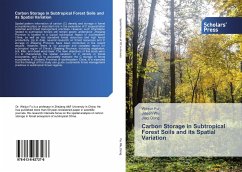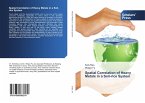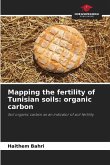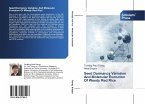Spatial pattern information of carbon (C) density and storage in forest ecosystems plays an important role in the evaluation of C sequestration potential and forest management practices. However, such information related to subtropical forests still remain poorly understood. Zhejiang Province is located in a typical subtropical region of southeastern China, as well as has abundant forest resources and high forest productivity. Up to date, several research on forest resources and C storage in Zhejiang Province have been conducted in the recent decade. However, there is no accurate and complete report for subtropical region of China's Zhejiang Province, including vegetation, soil, litter, and dead wood layer. The main objectives of this study were (1) to characterize the spatial variation of C density in forest ecosystems, and (2) to accurately estimate the C storage in forest ecosystems in Zhejiang Province of southeastern China. It is expected that the findings of this study can guide sustainable forest management practices in subtropical forest regions.
Bitte wählen Sie Ihr Anliegen aus.
Rechnungen
Retourenschein anfordern
Bestellstatus
Storno








